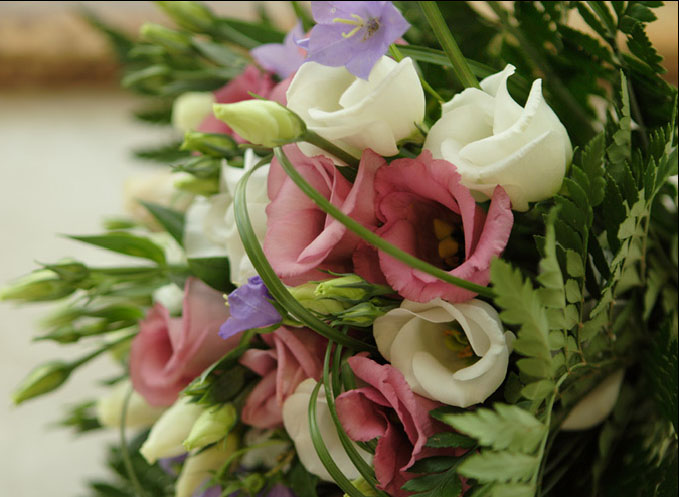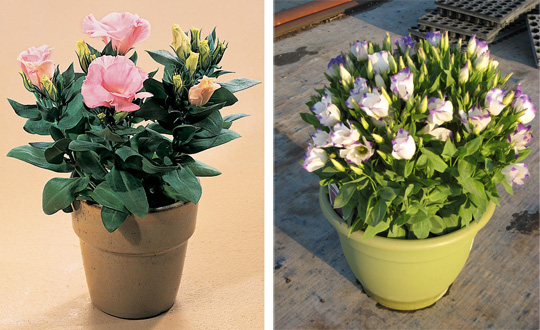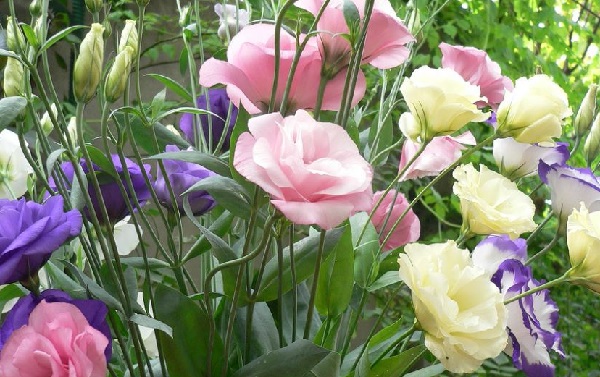 Eustoma or lisianthus is a delicate and beautiful flower, characterized by a unique rich flowering. This plant, first discovered in the 19th century on the shores of Central America, still excites the hearts of many breeders, exotic lovers and ordinary gardeners.
Eustoma or lisianthus is a delicate and beautiful flower, characterized by a unique rich flowering. This plant, first discovered in the 19th century on the shores of Central America, still excites the hearts of many breeders, exotic lovers and ordinary gardeners.
Eustoma is a decorative-flowering plant that takes root equally well both in the garden and at home on your windowsill, and all thanks to its unpretentiousness in the care and cultivation, thanks to which, with each garden season, the eustoma deserves more and more fame.
Nevertheless, difficulties can be encountered at the stage of growing lysianthus seedlings from seeds, since they have a low percentage of germination and “survivability”. A good achievement is when at least 30-40% of seedlings have been obtained from seeds.
Content
Seed selection
Healthy, high-quality seeds are the basis for a successful and fruitful seedling cultivation. It is best to purchase them from trusted and familiar manufacturers.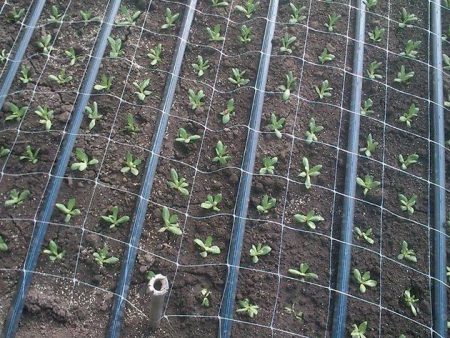
When buying, you should pay attention to hybrids and species that are resistant to disease and a sharp change in weather. For the garden plot, for example, the ABC and ECHO varieties are good, they are granular, decontaminated and carefully selected. The seeds purchased at the store are covered with a special nutritious shell of components that contribute to the successful growth of seedlings.
The labeling on the packaging with the letters F1 and F2 indicates hybrids of the first and second generation, it is better to choose them, since with each "rebirth" the seeds of lisianthus become even smaller, and their already low germination rate becomes even lower. Moreover, the frequent long-term collection of seeds provokes the degeneration of signs of flowering: the number of buds will fall, the lush terry will be lost, the colors will fade.
Therefore, it is recommended to collect a shift from your own bushes no more than 2-3 times, and it is best to buy them fresh in a flower shop.
The choice of soil for seedlings for eustoma
Eustoma flower is not whimsical and not demanding on the composition of the soil for growing, so gardeners boldly use universal soils for this, which can be found in every flower shop. Florists with experience, for example, are advised to grow lysianthus seedlings in the soil for violets, which has a more nutritious composition.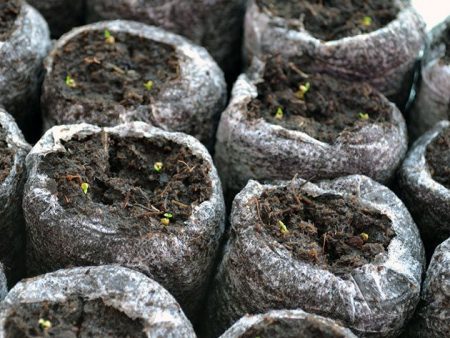
Soil for eustoma can be "collected" by yourself. To do this, collect land in the garden, remove all rubbish from it (roots, leaves, grass, etc.), sift through a large and then a fine sieve, add peat and calcined equal parts of it (at 200 degrees in the oven) fine river sand. Mix the ingredients thoroughly and steam the resulting composition in a colander over boiling water for about an hour.
If desired, you can add wood ash and a few tablespoons of perlite (an indispensable addition to the soil, helps to retain moisture at the roots and preserve nutrients in the ground).
The next simplest soil option is peat tablets containing the optimal composition for feeding seeds and growing seedlings. For eustoma, tablets no more than 5 cm in diameter are suitable. They are soaked in warm water for a day, after which they are placed in containers for planting and seeds are planted in them.
Favorable days for planting eustoma seeds for seedlings according to the lunar calendar 2018
Sowing the seeds of lisianthus is an important and fundamental stage for the fruitful cultivation of this wonderful flower, which must be thought out in advance, take into account the characteristics of the selected variety, and also provide for the influence of the lunar cycle for successful plant growth. It is of great importance not only how to sow the seeds, in which soil, but also when exactly this is best done.
If the flower will "dwell" at home, seedlings can be grown throughout the year, provided that the seedlings are provided with favorable conditions, maintain the required temperature and provide them with light.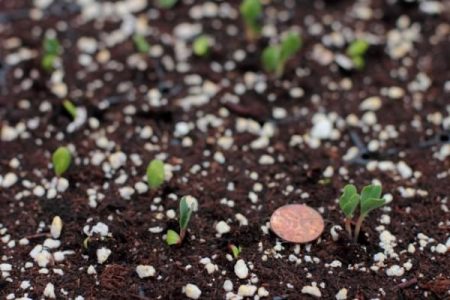
If the planting of eustoma is planned in the open ground, you need to take care of growing seedlings in late winter or early spring. February and March are best suited for this, but some experienced gardeners are also seeking high-quality seedlings in January.
To get strong and healthy seedlings of eustoma, it is best to focus on the lunar calendar. He will indicate when sowing seeds of lisianthus for seedlings in 2018 will be more favorable and appropriate.
Reviews of flower growers only confirm the effectiveness of the "calendar" planting method. In the case of coordinating the timing of planting a plant with the lunar calendar and the correct implementation of this manipulation, seedlings appear faster from underground, grows faster, and the probability of its death decreases.
Days coinciding with the phase of the growing moon are the most favorable for sowing.
It is best to engage in planting as early as possible, since it takes a lot of time to form, the appearance of seedlings. You can see the first seedlings no earlier than 2-3 weeks after sending the seeds into the ground.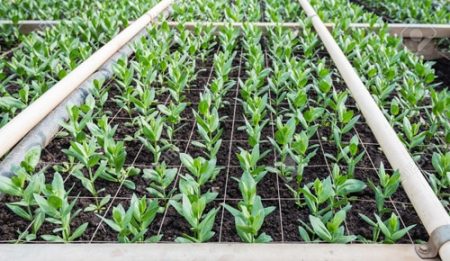
Since this flower is characterized by slow growth, it is best to plant it early enough, preferably at the very beginning of the year.
The most successful periods for planting lisianthus seeds in 2018:
- January 25, and periods from January 13 to January 16 and from January 25 to January 30;
- February 19-22.
If you did not have time for a winter planting, seedlings can be planted in the spring:
- in March at 12-14 and 22-24 numbers;
- in April at 7-10 and 19-22 dates.
Astrologers unequivocally determined unfavorable days for gardening as follows:
- February - 14, 15, 16;
- March 2, 16, 30.
But even experienced flower growers who adhere to the recommendations of the calendar know that planting seeds at the right time is not the main thing. Proper care plays an equally important role in the favorable breeding of flowers.
Getting seedlings of lisianthus from seeds: planting, care, diving
For seedlings, a suitable and optimal in composition soil is prepared, fertile and loose, which is subsequently slightly moistened. Then seeds are laid on its surface, adhering to a distance of 30 cm, and they are covered with a thin layer of earth.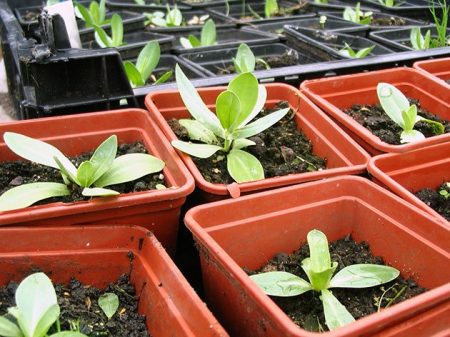
The container with seeds is covered with a thin film of polyethylene, the edges are periodically raised for ventilation and at this time they moisten the surface of the soil with a spray gun.
It is necessary to hang a daylight lamp over the landing capacity at a distance of 30-40 cm from it and use the light for 10-12 hours a day, and also adhere to a temperature regime of 19-22 degrees. Subject to all conditions, the seedlings will appear in 2-3 weeks.
The formation of the roots of the plant during the growth period takes the most effort. At this stage, you should increase the amount of natural daylight, for example, rearranging seedlings on a bright window.
In young plants, the root system is small and weak. It can be easily injured by barely touching the upper leaves.
As carefully as possible, you need to approach the process of diving the sprouts of lisianthus. You can dive them when they grow to 4-5 cm, and use the transshipment method for this.
Choose a container for transplanting seedlings with a diameter of not more than 10 cm, use the same soil as when sowing. Handling plants need to be very careful so as not to damage young roots.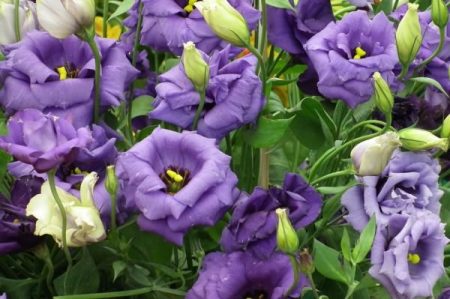
Outdoor Landing: Care Tips
When the seedlings get stronger and two pairs of full leaves appear on it, it is transplanted into the open ground. It is better to do this by the end of May, when frosts will pass, on a cloudy day or in the evening after sunset.
To preserve the flower and provide it with good conditions for flowering and growth, adhere to the following rules:
- the soil for planting should be fertile;
- Choose unshaded plots of land;
- provide the flower with a lot of light, but avoid direct sunlight, to avoid burns;
- protect the plant from drafts and wind;
- Do not plant a flower near the fence, brick and iron walls to avoid burns from heating them;
- keep the soil moist, but do not “flood” it;
- Lisianthus is a tropical plant and does not tolerate temperatures below 0 degrees.
For breeding eustoma at home in pots, choose low-growing varieties, remember the temperature, lighting in the dark, leave a flower on the windows with access to the east or west side.
Growing lisianthus flower from seeds is a laborious and lengthy process. But, having gained experience and knowledge, this can be done quite successfully and easily. A gentle and graceful lisianthus, which has blossomed around the middle of summer, will delight you with its flowering for a long six weeks.

